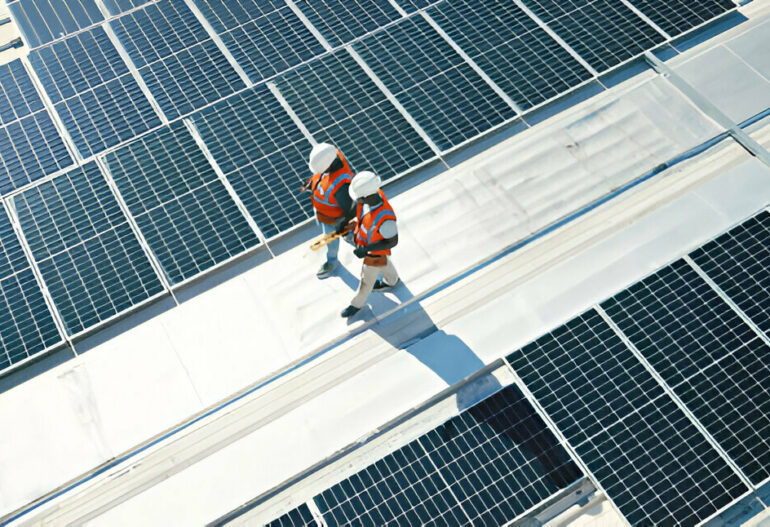Aspects of a Good Solar Power Plant
The transition to renewable energy sources has gained significant momentum in recent years, and solar power stands at the forefront of this movement. A well-designed solar power plant is not only a testament to technological advancement but also a crucial step towards a sustainable future. Here are some key aspects that define a good solar power plant:
1. Optimal Location
Choosing the right location is paramount for maximizing the efficiency and output of a solar power plant. Ideal sites have:
- High Solar Irradiance: Locations with abundant sunlight throughout the year ensure maximum energy generation.
- Minimal Shading: Areas free from obstructions like tall buildings, trees, or mountains that could cast shadows on the panels.
- Suitable Climate: While solar panels are durable, extreme weather conditions can affect their performance. Locations with moderate climates are preferable.
2. Quality of Solar Panels
The efficiency and longevity of a solar power plant heavily depend on the quality of the solar panels used. Important factors to consider include:
- Efficiency Rating: Higher efficiency panels convert more sunlight into electricity, which is crucial for maximizing output.
- Durability and Warranty: Panels with longer warranties often indicate higher durability and quality. Look for panels that can withstand harsh weather conditions.
- Technology Type: Different technologies (monocrystalline, polycrystalline, thin-film) offer varying efficiencies and cost structures. The choice should align with the project’s goals and budget.
3. Advanced Inverters
Inverters play a critical role in converting the direct current (DC) generated by solar panels into alternating current (AC) used by most electrical systems. Features of good inverters include:
- High Efficiency: Efficient inverters minimize energy loss during conversion.
- Durability: Inverters should be robust and capable of operating efficiently under various environmental conditions.
- Smart Capabilities: Modern inverters often come with monitoring and diagnostic features, enabling better management and maintenance.
4. Effective Energy Storage Solutions
To ensure a steady supply of electricity even when the sun isn’t shining, integrating efficient energy storage solutions is crucial. Key aspects include:
- Battery Capacity: Adequate storage capacity to handle peak loads and provide backup during cloudy days or at night.
- Durability and Lifespan: Long-lasting batteries that can endure frequent charge-discharge cycles.
- Scalability: Storage solutions should be scalable to meet future energy demands.
5. Efficient Layout and Design
The physical layout and design of the solar power plant significantly impact its overall performance. Considerations include:
- Panel Orientation and Tilt: Proper orientation and tilt angles maximize sunlight absorption.
- Spacing: Adequate spacing between panels prevents shading and allows for maintenance access.
- Ground Coverage Ratio (GCR): Optimizing GCR ensures the best use of available space without compromising efficiency.
6. Robust Monitoring and Maintenance Systems
Regular monitoring and maintenance are essential for the long-term performance of a solar power plant. Effective systems include:
- Remote Monitoring: Advanced systems that allow for real-time monitoring of performance metrics.
- Predictive Maintenance: Use of AI and machine learning to predict potential issues and address them proactively.
- Routine Inspections: Regular physical inspections to ensure all components are functioning correctly and efficiently.
7. Regulatory Compliance and Incentives
Compliance with local, regional, and national regulations is crucial. Additionally, taking advantage of available incentives can significantly impact the project’s financial viability:
- Permits and Approvals: Ensuring all necessary permits are obtained to avoid legal issues.
- Incentives and Subsidies: Leveraging tax credits, grants, and other financial incentives available for renewable energy projects.
8. Community and Environmental Impact
A good solar power plant should contribute positively to the community and environment:
- Minimal Environmental Footprint: Ensuring the plant’s construction and operation have minimal negative impact on the local ecosystem.
- Community Engagement: Involving local communities in the planning and development process to gain support and ensure mutual benefits.
- Job Creation: Providing employment opportunities during both the construction and operational phases.
Conclusion
Building a good solar power plant involves a careful balance of technology, design, and environmental considerations. By focusing on these aspects, we can develop efficient, durable, and sustainable solar power plants that contribute significantly to our renewable energy goals and pave the way for a greener future.


